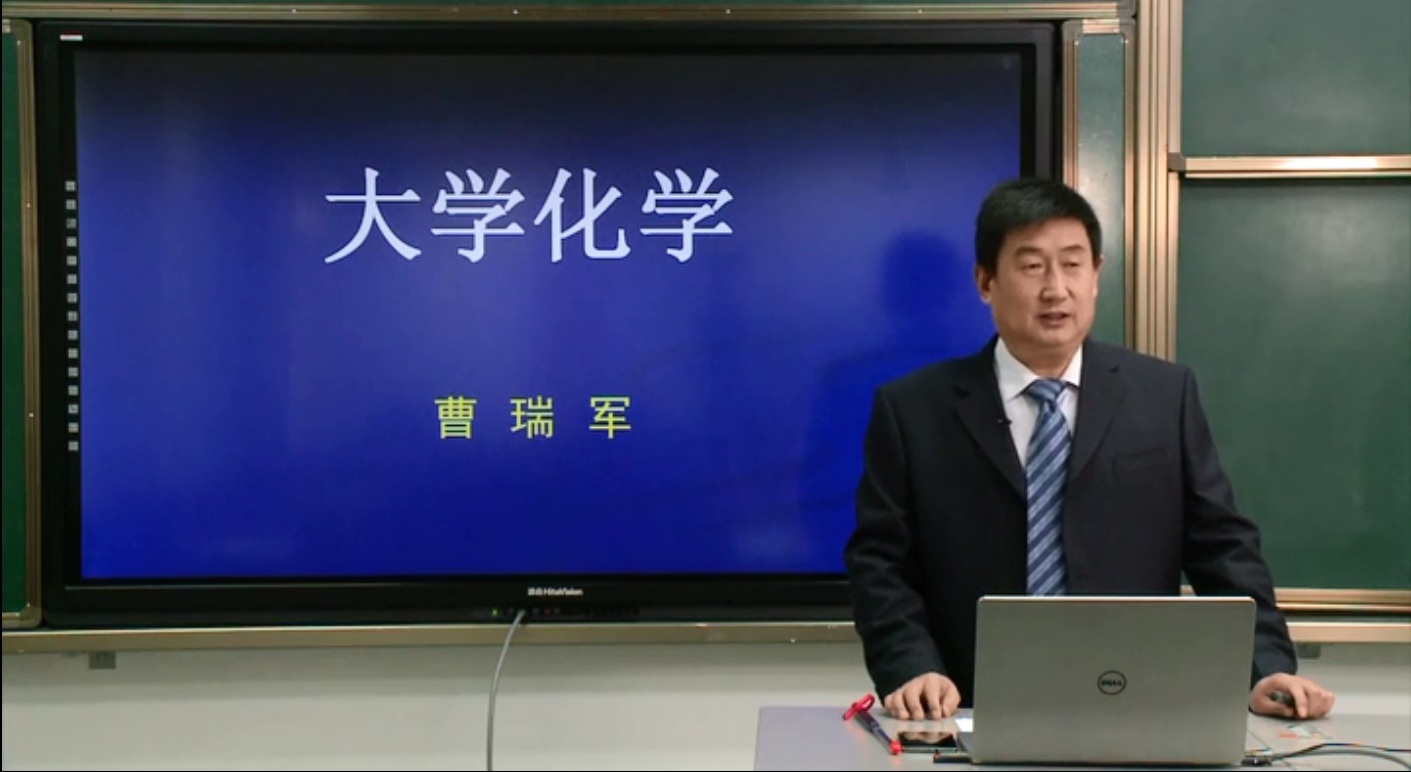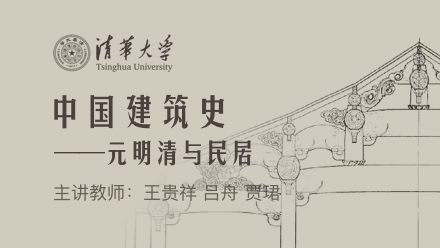
当前课程知识点:电路原理 > 第7周 非线性电阻电路(Nonlinear resistive circuits) > 第42讲 假设检验法的应用(application of suppose-verify method) > 假设检验法的应用(application of suppose-verify method)(2)
接下来我们给大家介绍另外一种假设检验方法的应用
在上一讲里
我们介绍了半波整流
在这一讲里我们介绍另外一种整流
它的名称叫做全桥整流电路
为什么叫全桥呢
是由于电源和四个二极管
一起构成了一个桥式电路
关于桥式电路我们在此前有过很多的讨论
下面我们来分析这个电路
根据我们在第四十一讲介绍的内容
如果这个电路包括四个非线性元件
每一个元件都有两个工作阶段的话
整个电路就有2的4次方等于16种工作情况
我们逐一讨论这16种工作情况太复杂了
在这里我们给大家介绍一种针对于
包含二极管电路的特殊分析方法
我们管它叫做电流流向假设法
这也巧妙的利用了假设检验的思想
在整个这一道题的分析里
我们均假设这四个二极管是理想二极管
也就是说导通的时候是理想导线
关断的时候是理想的开路
那我们现在来观察所谓的电流流向假设法
就是假设某一个电流能够从某一个二极管流通
看这个电流究竟能怎样流动
我们看假设有一个电流能够这样流动
因为对于第一来讲
只有可能有这个方向的电流
流到这里了以后是不能往下流的
因为第二不能够承受反向的电流
必须这样流
这个电流流到这里以后有两种可能
一种可能向上
一种可能在这儿向上
那么这种情况是不可能的
因为如果是这样
这就构成了一个闭合回路
不可能存在着一个由纯电阻构成的闭合回路
还有电流的存在
那么现在唯一的可能是从这儿流上来
那么类似的
它也不能再往上流
否则就会构成了一个由纯电阻构成的闭合回路有电流
因此这个电流就必须要这么流
大家看这样就构成了一个完整的闭合电流回路
那么要想形成这样一个闭合电流回路
就需要这个有一个正的电流值
那么在什么样的情况下
这是一个正的电流值呢
i是等于A乘以sinωt比上R的
这个值需要大于零
在A值R值都大于零的情况下
只需要sinωt是大于零的
那么我们把电源信号和负载上的电压信号都来画一下
那么在sinωt大于零的时候
我们知道这是短路线 这是短路线
U是等于Us的
就是这样的
那么接下来我们分析另外一种情况
刚才的假设是第一上面流通一个正向的电流
导致第四必然流通一个正向的电流
现在我们假设
第二上面流通一个正向的电流
跟刚才类似的它不能往左流
因为这个时候第一就要流反向电流了
这是不行的
因此必须往这边流
这个电流还要大于零
它要这样的流过这个电阻
类似的它不能往上流
否则就会构成一个闭合的
仅包含电阻有正向电流的电路
因此需要从这儿有一个
第三有一个正向的电流
类似的它不能再往上流
因为如果是这样的话
就同样包含了这样一个闭合的电路
所以必然就构成了这样一个回路
这个电流是需要大于零的
我们现在来观察一下
这个时候的负载上的电压
是反向的加在了电源的电压之上
于是i是等于负的Asinωt比上R需要大于零
因此它的条件是sinωt小于零的
大家请看这一点非常美妙
我们前面讲过了
半波整流的劣处是在于
电源为正的时候可以给负载提供能量或者信号
但是电源为负的时候
负载上的电压为零
但是在桥式整流的时候
电源信号为负的时候
负载上同样可以获得正值的电压
也就是说
负载上的电压波形是这个样子的
那么我们接下来
用一个仿真和一个实验来验证这里的分析
我们通过仿真来验证全桥整流电路的功能
图中四个二极管为桥式连接
输入端接10伏有效值50赫兹正弦波电压源
输出端接负载电阻R1
将输入信号接到示波器的A通道
用蓝色线表示
负载电阻两段输出电压接到示波器B通道
用红色线表示
由于双通道的输入地隔离
B通道的输入地并不是电源地
打开示波器给运行暂停
蓝色的输入信号是标准的正弦波
在正半周红色的输出信号与输入信号基本吻合
在负半周输出信号是输入信号的反转
输出信号是连续的波动的直流信号
实现了全波整流功能
现在我们做一个二极管构成的全桥整流实验
它可以将交流变为直流
这是电路
输入为交流电压
输出是电阻产生的电压
经运算放大器隔离
用示波器顺便观察
不接入平滑电容和接入平滑电容
两种情况下输入和输出电压的波形
通过开关来控制
现在大家看到的
就是不接平滑电容的输入和输出电压波形
可以看到这个时候的输出
是有较大脉动的直流
现在接入平滑电容
可以看到这时输出的波形较为平滑
是较为理想的直流
-第0讲 数学基础知识(Math basics for circuits)
--数学基础知识(Math basics for circuits)(1)
--数学基础知识(Math basics for circuits)(2)
--数学基础知识(Math basics for circuits)(3)
--数学基础知识(Math basics for circuits)(4)
--数学基础知识(Math basics for circuits)(5)
--数学基础知识(Math basics for circuits)(6)
--数学基础知识(Math basics for circuits)(7)
-第1周 第0讲 数学基础知识
-第1讲 为什么要学习电路(why learn circuits?)
--为什么要学习电路(why learn circuits?)(1)
--为什么要学习电路(why learn circuits?)(2)
-第1周 第1讲 为什么要学习电路
-第2讲 电路(circuits)
-第1周 第2讲 电路(circuits)
-第3讲 支路变量(branch variables)
-第1周 第3讲 支路变量(branch variables)
-第4讲 参考方向(reference direction)
-第1周 第4讲 参考方向(reference direction)
-第5讲 功率(power)
--第一周 第5讲 功率(power)
-第6讲 电阻(resistor)
-第1周 第6讲 电阻(resistor)
-第7讲 独立电源(independent source)
--独立电源(independent source) (1)
--独立电源(independent source) (2)
-第1周 第7讲 独立电源(independent source)
-仿真1(simulation1)
-第8讲 端口(port)
--端口(port)
-第1周 第8讲 端口(port)
-第9讲 受控元件(dependent elements)
--受控元件(dependent elements) (1)
--受控元件(dependent elements) (2)
--受控元件(dependent elements) (3)
-第1周 第9讲 受控元件(dependent elements)
-仿真2(simulation2)
-第10讲 基尔霍夫定律(KCL KVL)
-第1周 第10讲 基尔霍夫定律(KCL KVL)
-第11讲 2B法(2B method)
--第1周 第11讲 2B法(2B method)
-第1周 作业
-第12讲 电阻的串并联(serial parallel resistors)
--电阻的串并联(serial parallel resistors) (1)
--电阻的串并联(serial parallel resistors) (2)
--电阻的串并联(serial parallel resistors) (3)
--电阻的串并联(serial parallel resistors) (4)
-第2周 第12讲 电阻的串并联
-第13讲 平衡电桥(bridge)
--第二周 第13讲 平衡电桥(bridge)
-第14讲 Y-Δ变换(Y-Δ transform)
--第二周 第14讲 Y-Δ变换(Y-Δ transform)
-第15讲 二端网络的等效电阻(equivalent resistance of two-terminal network)
--二端网络的等效电阻(equivalent resistance of two-terminal network)
--第二周 第十五讲 二端网络的等效电阻
-第16讲 电源的等效变换(equivalent transform for sources)
--电源的等效变换(equivalent transform for sources) (1)
--电源的等效变换(equivalent transform for sources) (2)
--电源的等效变换(equivalent transform for sources) (3)
-第2周 第16讲 电源的等效变换(equivalent tran
-第17讲 最大功率传输(maximum power transfer)
--最大功率传输(maximum power transfer)
--第二周 第17讲 最大功率传输
-第2周 第二周作业(Exercise2)
-第18讲 运算放大器(Op Amps)
-第3周 第18讲 运算放大器(Op Amps)
-第19讲 运算放大器模型(Op Amps' model)
-第3周 第19讲 运算放大器模型(Op Amps' m
-仿真3(simulation3)
-第20讲 理想运算放大器(ideal Op Amp)
-第3周 第20讲 理想运算放大器(ideal Op Amp)
-第21讲 运算放大器的应用(applications of Op Amps)
--运算放大器的应用(applications of Op Amps)(1)
--运算放大器的应用(applications of Op Amps)(2)
--运算放大器的应用(applications of Op Amps)(3)
-第3周 第21讲 运算放大器的应用(applications of Op Amps)
-第三周作业(Exercise3)
-第22讲 数字系统介绍(digital system —— introduction)
--数字系统介绍(digital system —— introduction)
-第4周 第22讲 数字系统介绍(digital system —— introduction)
-第23讲 数字系统——数和逻辑(digital system——number and logic in digital)
--数字系统——数和逻辑(digital system——number and logic in digital)(1)
--数字系统——数和逻辑(digital system——number and logic in digital)(2)
-第4周 第23讲 数字系统——数和逻辑
-第24讲 金属-氧化层半导体场效晶体管(MOSFET)
-第4周第24讲 金属-氧化层半导体场效晶体管(MOSFET)
-第25讲 逻辑门(logic gates)
-第4周 第25讲 逻辑门(logic gates)
-第26讲 互补金属氧化物半导体(CMOS)
-第4周 第26讲 互补金属氧化物半导体(CMOS)
-第27讲 二端口网络(two-port network)(不要求)
-第4周 第27讲 二端口网络(two-port network)
-第28讲 G参数(G parameter)(不要求)
-第4周 第28讲 G参数(G parameter)
-第29讲 其他参数(other parameters)(不要求)
-第4周 第29讲 其他参数(other parameters)
-第30讲 二端口网络的等效电路(equivalent circuits of two-port)(不要求)
--二端口网络的等效电路(equivalent circuits of two-port)
-第4周 第30讲 二端口网络的等效电路
-第31讲 二端口网络的连接(connection of two-ports)(不要求)
--二端口网络的连接(connection of two-ports)(1)
--二端口网络的连接(connection of two-ports)(2)
--二端口网络的连接(connection of two-ports)(3)
-第4周 第31讲 二端口网络的连接
-第四周作业(Exercise4)
-第32讲 系统化方程解法介绍(introduction to systematic function formulating)
--系统化方程解法介绍(introduction to systematic function formulating)
-第5周 第32讲 系统化方程解法介绍
-第33讲 节点电压法(node voltage method)
--节点电压法(node voltage method)(1)
--节点电压法(node voltage method)(2)
-第5周 第33讲 节点电压法
-第34讲 回路电流法(loop current method)
--回路电流法(loop current method)(1)
--回路电流法(loop current method)(2)
--回路电流法(loop current method)(3)
-第5周 第34讲 回路电流法
-第五周作业(Exercise5)
-第35讲 叠加定理(superposition theorem)
--叠加定理(superposition theorem)(1)
--叠加定理(superposition theorem)(2)
--叠加定理(superposition theorem)(3)
--叠加定理(superposition theorem)(4)
-第6周 第35讲 叠加定理
-第36讲 戴维南和诺顿定理(Thevenin/Norton theorem)
--戴维南和诺顿定理(Thevenin/Norton theorem)(1)
--戴维南和诺顿定理(Thevenin/Norton theorem)(2)
--戴维南和诺顿定理(Thevenin/Norton theorem)(3)
--戴维南和诺顿定理(Thevenin/Norton theorem)(4)
-第6周 第36讲 戴维南和诺顿定理
-第37讲 戴维南定理的应用(applications of Thevenin theorem)
--戴维南定理的应用(applications of Thevenin theorem)(1)
--戴维南定理的应用(applications of Thevenin theorem)(2)
--戴维南定理的应用(applications of Thevenin theorem)(3)
-第6周 第37讲 戴维南定理的应用
-第38讲 替代定理(substitution theorem)
-第6周 第38讲 替代定理
-第六周作业(Exercise6)
-第39讲 非线性电阻(nonlinear resistor)
--非线性电阻(nonlinear resistor)(1)
--非线性电阻(nonlinear resistor)(2)
-第7周 第39讲 非线性电阻
-第40讲 非线性电阻电路的方程求解法和图解法(analytical and graphical methods for nonlinear circuits)
--非线性电阻电路的方程求解法和图解法(analytical and graphical methods for nonlinear circuits)(1)
--非线性电阻电路的方程求解法和图解法(analytical and graphical methods for nonlinear circuits)(2)
-第7周 第40讲 非线性电阻电路的方程求解
-第41讲 非线性电路的分段线性法(piecewise linear method for nonlinear circuits)
--非线性电路的分段线性法(piecewise linear method for nonlinear circuits)(1)
--非线性电路的分段线性法(piecewise linear method for nonlinear circuits)(2)
--非线性电路的分段线性法(piecewise linear method for nonlinear circuits)(3)
--非线性电路的分段线性法(piecewise linear method for nonlinear circuits)(4)
--非线性电路的分段线性法(piecewise linear method for nonlinear circuits)(5)
-第7周 第41讲 非线性电路的分段线性法
-第42讲 假设检验法的应用(application of suppose-verify method)
--假设检验法的应用(application of suppose-verify method)(1)
--假设检验法的应用(application of suppose-verify method)(2)
-第7周 第42讲 假设检验法的应用
-第43讲 非线性电路的小信号法(small signal method for nonlinear circuits)
--非线性电路的小信号法(small signal method for nonlinear circuits)(1)
--非线性电路的小信号法(small signal method for nonlinear circuits)(2)
--非线性电路的小信号法(small signal method for nonlinear circuits)(3)
-第7周 第43讲 非线性电路的小信号法
-第44讲 小信号模型(small signal models)
--小信号模型(small signal models)(1)
--小信号模型(small signal models)(2)
--小信号模型(small signal models)(3)
--第七周 第44讲 小信号模型
-第45讲 放大器(amplifier)
--第七周 第45讲 放大器(amplifier)
-第七周作业(Exercise7)
-第46讲 电容与电感(Capacitors and Inductors)
--第46讲 电容与电感(Capacitors and Inductors)(1)
--第46讲 电容与电感(Capacitors and Inductors)(2)
--第46讲 电容与电感(Capacitors and Inductors)(3)
--第46讲 电容与电感(Capacitors and Inductors)(4)
--第46讲 电容与电感(Capacitors and Inductors)(5)
-第8周 第46讲 电容与电感
-第47讲 动态电路(Dynamic Circuits)
--第47讲 动态电路(Dynamic Circuits)(1)
--第47讲 动态电路(Dynamic Circuits)(2)
--第47讲 动态电路(Dynamic Circuits)(3)
--第47讲 动态电路(Dynamic Circuits)(4)
--第八周 第47讲 动态电路
-第48讲 初值(Initial Values)
--第八周 第48讲 初值(Initial Values)
-第49讲 一阶电路经典法(Classical Method for First-Order Circuits)
--第49讲 一阶电路经典法(Classical Method for First-Order Circuits)(1)
--第49讲 一阶电路经典法(Classical Method for First-Order Circuits)(2)
--第49讲 一阶电路经典法(Classical Method for First-Order Circuits)(3)
--第49讲 一阶电路经典法(Classical Method for First-Order Circuits)(4)
--第49讲 一阶电路经典法(Classical Method for First-Order Circuits)(5)
--第九周 第49讲 一阶电路经典法
-第50讲 一阶电路三要素法(Three Elements Method for First-Order Circuits)
--第50讲 一阶电路三要素法(Three Elements Method for First-Order Circuits)(1)
--第50讲 一阶电路三要素法(Three Elements Method for First-Order Circuits)(2)
--第50讲 一阶电路三要素法(Three Elements Method for First-Order Circuits)(3)
--第50讲 一阶电路三要素法(Three Elements Method for First-Order Circuits)(4)
-第8周 第50讲 一阶电路三要素法
-仿真4(Simulation 4)
-第51讲 零输入响应和零状态响应(zero input response and zero state response)
--第八周 第51讲 零输入响应和零状态响应
-第八周作业
-第52讲 一阶电路的应用之信号: 门传输延迟(applications of first-order circuits (signal: gate propagation delay))
--第九周 第52讲 一阶电路的应用之信号: 门传输延迟
-第53讲 一阶电路的应用之信号: 运算放大器电路(applications of first- order circuits (signal: Op Amp circuits))
-第9周:第53讲 一阶电路的应用之信号: 运算放大器电路
-第54讲 一阶电路的应用之能量: 整流与斩波(applications of first-order circuits (energy: rectifying and chopping))
--第九周 第54讲 一阶电路的应用之能量: 整流与斩波
-A1 单位阶跃函数和单元阶跃响应(unit step function and unit step response)(不要求)
--A1 单位阶跃函数和单元阶跃响应(unit step function and unit step response)(1)
--A1 单位阶跃函数和单元阶跃响应(unit step function and unit step response)(2)
--A1 单位阶跃函数和单元阶跃响应(unit step function and unit step response)(3)
-第9周: A1 单位阶跃函数和单元阶跃响应
-A2 单位冲激函数(unit impulse function)(不要求)
--A2 单位冲激函数(unit impulse function)(1)
--A2 单位冲激函数(unit impulse function)(2)
--第九章 A2 单位冲激函数(不要求)
-A3 单位冲激响应(unit impulse response)(不要求)
--A3 单位冲激响应(unit impulse response)(1)
--A3 单位冲激响应(unit impulse response)(2)
--A3 单位冲激响应(unit impulse response)(3)
--A3 单位冲激响应(unit impulse response)(4)
-第9周: A3 单位冲激响应
-A4 卷积积分(convolution integral)(不要求)
--A4 卷积积分(convolution integral)(1)
--A4 卷积积分(convolution integral)(2)
--A4 卷积积分(convolution integral)(3)
--A4 卷积积分(convolution integral)(4)
--A4 卷积积分(convolution integral)(5)
-第9周: A4 卷积积分
-第九周作业(Exercise 9)
-第55讲 串联RLC二阶电路(serial RLC second-order circuits)
-第10周: 第55讲 串联RLC二阶电路
-第56讲 并联RLC二阶电路(parallel RLC second-order circuits)
--第十章 第56讲 并联RLC二阶电路
-第57讲 二阶电路直觉解法(intuitive method for second-order circuits)
--第十周 第57讲 二阶电路直觉解法
-第58讲 二阶电路的应用(applications of second-order circuits)
--第十周 第58讲 二阶电路的应用
-第十周作业(Exercise 10)
-第59讲 正弦波(sine wave)
--第十一周 第59讲 正弦波(sine wave)
-第60讲 电力系统(power system)
--第十一周 第60讲 电力系统(power system)
-第61讲 相量(phasor)
-第11周: 第61讲 相量(phasor)
-第62讲 KCL和KVL的相量形式(phasor form of KCL and KVL)
--第十一周 第62讲 KCL和KVL的相量形式
-第63讲 RLC的相量关系(phasor relationship of RLC)
-第11周: 第63讲 RLC的相量关系
-第64讲 正弦稳态电路相量法(phasor method for sinusoidal steady state circuits)
--第十一周 第64讲 正弦稳态电路相量法
-仿真5(Simulation 5)
--仿真5
-第65讲 瞬时功率(instantaneous power)
-第11周: 第65讲 瞬时功率(instantaneous power)
-第66讲 平均功率(average power)
--第十一周 第66讲 平均功率(average power)
-第67讲 无功功率和视在功率(reactive power and apparent power)
-第11周: 第67讲 无功功率和视在功率
-第68讲 复功率(complex power)
--第68讲 复功率
--第十一周 第68讲 复功率(complex power)
-第十一周作业(Exercise 11)
-第69讲 频率特性(frequency characteristics)
-第12周: 第69讲 频率特性
-仿真6(Simulation 6)
--仿真6
-第70讲 滤波器(filter)
--第十二周 第70讲 滤波器(filter)
-第71讲 频率特性的应用——小信号放大器的低通特性(applications of frequency characteristics (low-pass characteristics of t
-第12周: 第71讲 频率特性的应用
-第72讲 谐振(resonance)
--第72讲 谐振
--第十二周 第72讲 谐振(resonance)
-第73讲 RLC谐振(RLC resonance)
--第十二周 第73讲 RLC谐振
-第74讲 串联RLC谐振的品质因数(quality factor of serial RLC resonance)
-第12周: 第74讲 串联RLC谐振的品质因数
-第75讲 LC谐振(LC resonance)
--第十二周 第75讲 LC谐振(LC resonance)
-第12周: 第75讲 LC谐振(LC resonance)
-第76讲 谐振的应用(applications of resonance)
--第十二周 第76讲 谐振的应用
-第12周: 第十二周作业(Exercise 12)
-第77讲 互感和互感电压(mutual inductance and mutual voltage)
-第13周: 第77讲 互感和互感电压
-第78讲 同名端(dot convention)
--第十三周 第78讲 同名端(dot convention)
-第79讲 互感的应用(能量和信号)(application of mutual inductance (power and signal))
-第80讲 互感的去耦等效(decoupling equivalence of mutual inductance)
--第十三周 第80讲 互感的去耦等效
-第81讲 空心变压器(air-core transformer)
--第十三周 第81讲 空心变压器
-第82讲 全耦合变压器(unity-coupled transformer)
--第十三周 第82讲 全耦合变压器
-第83讲 理想变压器(ideal transformer)
--第十三周 第83讲 理想变压器
-仿真7(Simulation 7)
--仿真7
-第十三周作业(Exercise 13)
-第84讲 三相电源(three phase source)
--第十四章 第84讲 三相电源
-第85讲 三相对称负载和三相对称电路(balanced three phase load and balanced three phase circuit)
--第十四章 第85讲 三相对称负载和三相对称电路
-第86讲 三相对称电路的分析(analysis of balanced three phase circuit)
--第十四章 第86讲 三相对称电路的分析
-第87讲 三相电路的功率(power in three phase circuits)
--第十四章 第87讲 三相电路的功率
-第88讲 周期信号的傅里叶级数(Fourier series for periodical signal)
-第14周:第88讲 周期信号的傅里叶级数
-第89讲 周期信号的有效值和平均功率(effective value and average power for periodical signal)
--第十四章 第89讲 周期信号的有效值和平均功率
-第90讲 周期激励下的电路稳态分析(steady state analysis of circuits with periodical excitations)
--第十四章 第90讲 周期激励下的电路稳态分析
-第十四周作业(Exercise 14)
-期末考试










